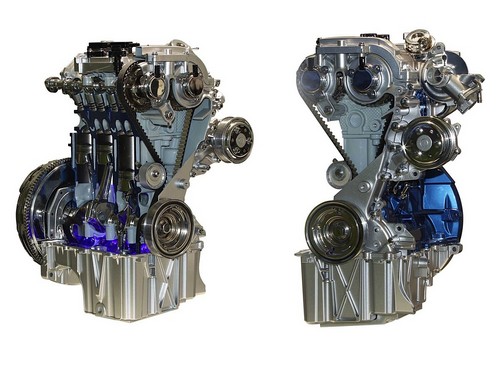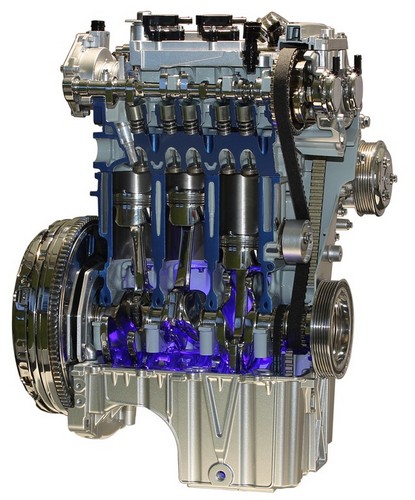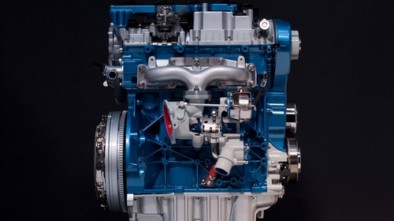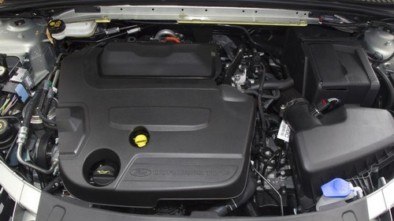1.0 Ford EcoBoost engine - experiences, problems

1.0 The EcoBoost engine comes in three versions, generating a maximum power of 100, 125 or 140 hp. What are your opinions on this engine after years of operation?
1.0 Engine EcoBoost, Ford emphasized that its engine block could fit on a sheet of A4 paper. The turbocharger has also been reduced, for the benefit of the driver. Due to the low inertia of the turbocharger rotor, you can barely feel the delay in reacting to the accelerator pedal and the engine runs nicely at low speed and evenly adds power to maximum engine rpm.
The 1.0 EcoBoost engine is powered by a toothed belt. The belt is in a sealed housing and is lubricated with engine oil which has increased its service life (the oil pump is also powered by a short toothed belt).
The manufacturer has defined a timing belt replacement interval of up to 240.000 kilometers or 10 years - mechanics suggest cutting the interval in half.
The 1.0 EcoBoost engine comes in versions that develop 100 hp and 170 Nm; 120 hp, 170 Nm; 125 hp and 170 Nm, 140 hp and 180 Nm. In stronger variants, the peak torque values can be higher due to the overboost function, which increases the gain pressure in a few seconds, providing an additional 30 Nm. The power range paved the way for the EcoBoost 1.0 engine in many Ford models - Seafood, Focus, B-Mak, C-Mak, Mondeo, EcoSport and Transit Courier.
The dynamics are satisfactory. For example: Focus 1.0 EcoBoost with 125 horsepower accelerates to 100 km / h in 11.3 seconds, resulting in 1.6-1.8 naturally aspirated engines. The turbine engine, however, outpaces them with flexibility. It is difficult to answer the question of how much the 1.0 EcoBoost engine consumes, as it depends most on the driver. The carefully driven Focus consumes 5-6 l / 100 km on the road and 7-8 l / 100 km in the city. If the driver often uses the accelerator, it's about 9-10 l / 100km and even more.

1.0 EcoBoost engine - benefits
The biggest advantages of EcoBoost engines are the elusive flexibility for naturally aspirated engines. Efficient driving in city traffic or on the road, does not require the use of high revs, which is evident in fuel consumption.
1.0EcoBoost engine - failures and problems
The use of direct fuel injection erases the economic meaning of the gas installation. In addition, the unit is sensitive to the quality of the fuel being refilled - any damage caused by poor fuel quality means overhauling the injector.
The durability of the turbocharger largely depends on the driving style and regular servicing - oil change every 10-15 thousand kilometers. In used vehicles that are used in accordance with the recommendations of experts, turbocharging can last about 200.000 kilometers.
Years of experience in the market have shown that Ford's engineers did their best. On the market for half-car, one can find half-car with a mileage of 300-350 thousand kilometers.

1.0 EcoBoost engines were not completely flawless. The cooling system causes the most problems. Pump and hose leaks were detected in some cars. The problem is the breakage of the pipe between the compensation tank and the turbocharger. Depending on the situation and the reaction time on the part of the driver, the leak can end up burning out the seal under the head, and even deforming the engine head and cylinder. In extreme situations, this included the need to replace the engine with a new or repaired one. In the case of engines manufactured since the fall of 2013, corrections were made to the cooling system. Reports of problems with electronics or oil leaks are sporadic.
Recommendation of similar texts:

Hi there, I am Mladen and I am an auto enthusiast. I started this blog years ago to help like minded people share information about latest cars, car servicing ideas, used car info, exotic cars, and auto technology. You will find helpful articles and videos on a wide variety of cars - Audi, Mercedes, Toyota, Porsche, Volvo, BMW and much more. Ping us if you have anything cool to share on latest cars or on how to make older cars more efficient, or just want to say hi!








